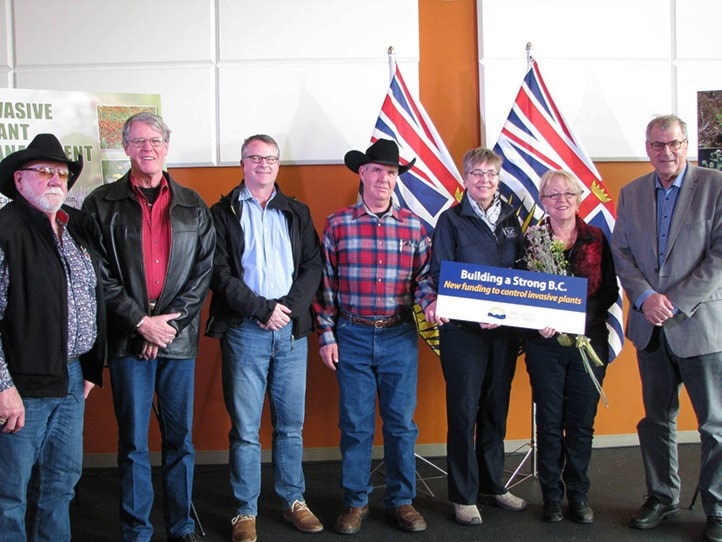A pilot project in the Thompson-Nicola Regional District (TNRD) over the next three years to explore new ways of managing invasive plants has received $2.2 million in funding from the provincial government.
Fraser-Nicola MLA Jackie Tegart, who led an extensive stakeholder consultation process which has resulted in the pilot project, says the project came about because of the proliferation of spotted knapweed within the TNRD.
“I did a tour of the region last year with Agriculture Minister Norm Letnick,” says Tegart. “The Noxious Weed Plant Committee in Merritt talked about spotted knapweed, and we facilitated a meeting with Transportation Minister Todd Stone and the TNRD to talk about the challenge and see what we could do.”
In January 2017, Stone asked Tegart to put together a report with the support of the Ministry of Transportation and the Ministry of Forests, Lands, and Natural Resource Operations. She spoke with representatives from the BC Cattlemen’s Association, the TNRD, Thompson Rivers University, First Nations, the BC Invasive Species Council, the Grasslands Conservation Council of BC, and the Southern Interior Weed Management Committee.
“We talked about what we were all doing now, and how we could improve what we were doing regarding coordination, planning, funding, training, education, and research,” says Tegart. “From that we were able to put together a report about what is currently being done and how to improve that.
“What we heard is that if we just treat one plant, we make room for other invasive species. We need to take a holistic approach. Through that, we will be able to put together innovative solutions that can be used across the province. We hope to become a centre of excellence for invasive plant research.”
The project will take place throughout the TNRD, with a particular emphasis on the Nicola Valley. “It seems to be a great place to start.” There will also be funding to support research being undertaken by Thompson Rivers University.
Tegart said she heard that the project needed multi-year planning and funding. “One of our challenges is that we need a coordinated approach to how we manage invasive plants. If a farmer deals with it on his private ranch, spotted knapweed doesn’t respect fences.”
She points out that collaboration and cooperation between the various stakeholder groups, including government ministries, is crucial. “We talked a lot about spotted knapweed growing in gravel pits. One plant can drop 150,000 seeds, so as you’re spreading gravel you’re also spreading the seeds. We have to ensure we’re maximizing the effects of whatever methods we’re using.”
Invasive species such as spotted knapweed and hawkweed can grow very quickly, and grow so dominant that they crowd out native species and forage grasses. This can considerably reduce the amount of food available for rangeland animals; by up to 90 per cent, in the case of spotted knapweed. Lessons learned from the TNRD pilot project will help improve invasive plant management practices throughout the province.
“I’m very excited about what the project will look like on the ground,” says Tegart. “Stakeholder groups will be called in the next few weeks to start planning. We can look at test plots, see what’s working, and share that information.
“It’s a pretty exciting project, and it has moved very quickly. We wanted something in place for this season. It might be short this year, but we can plan for years two and three. I’m looking forward to seeing what the plan will look like. It’s important for agriculture, particularly in our area.
“Who knows? Maybe we can win the fight.”
